Jacksonville, Fl. — The “Buresh Bottom Line”: Always be prepared!.....First Alert Hurricane Preparation Guide... City of Jacksonville Preparedness Guide... Georgia Hurricane Guide.
STAY INFORMED: Get the * FREE * First Alert Weather app
FREE NEWS UPDATES, ALERTS: Action News Jax app for Apple | For Android
WATCH “Preparing for the Storm”
WATCH “The Ins & Outs of Hurricane Season”
READ the First Alert Hurricane Center “Preparation Guide”
Federal Alliance for Safe Homes (FLASH) * here *.
***** ALWAYS CHECK & RE-CHECK THE LATEST FORECAST & UPDATES! ****
Tropics threats for Jacksonville/NE Florida/SE Georgia: What will likely be Rafael moving into the Gulf of Mexico could enhance rainfall somewhat Wed.-Thu. along with continued onshore flow causing rough seas & surf & a high rip current risk.
“Buresh Bottom Line”:
* Tropical depression 18 is over the Central & Southern Caribbean & should move over the Gulf of Mexico mid to late week as “Rafael”.
* “Patty” has dissipated over the NE Atlantic.
* “Mighty Milton” - Buresh Blog - recap of the hurricane including the forecast.
* “The Hell that was Helene” - Buresh Blog.
The Atlantic Basin Overview:

(1) ‘Tropical depression 18’
A Hurricane WARNING: Cayman Islands
A Hurricane WATCH: Cuban provinces of Pinar del Rio, Artemisa, La Habana, Mayabeque, Matanzas, and the Isle of Youth
A Tropical Storm WARNING: Jamaica
A Tropical Storm WATCH: Cuban provinces of Villa Clara, Cienfuegos, Sancti Spiritus, Ciego de Avila, Camaguey, and Las Tunas


Climavision ‘HorizonAI’ global model is below & has generally been a good “steady eddy” & compromise between other models this hurricane season. The forecast map below is for Wed., Nov. 6th indicating at least a tropical storm if not a hurricane near the south coast of Cuba. The next forecast map is for Fri., Nov. 8th showing the system - while weakening - into the Central & Northern Gulf of Mexico. The model has generally remained consistent on intensity - stronger south, weaker north... & has trended a bit west.
The third image shows the upper level (~30,000 feet) forecast for late week showing a broad & strong trough over the Central U.S. with a rather narrow ridge of high pressure to the east of Florida. This set-up is allowing for an alleyway from the Caribbean to the Gulf of Mexico & eventually the Central Gulf coastline. The ‘Horizon’ follows this alleyway all the way to the coast - not far from New Orleans - as does the Canadian model while the GFS & European models show a stronger ridge east of Fl. helping to turn the system sharper to the west over the Gulf... & the European model is generally much weaker overall. Virtually all of the models show weakening over the Gulf despite the orientation of an upper level trough with a tropical system to its south/SE which can increase upper level ventilation &, therefore, help increase a tropical cyclone. Gulf water temps. are sufficiently warm too. Yet the models shows a weakening system once over the Gulf & this appears to be related to increasing mid & upper level shear - out of the west 40+ mph - as well as an east-west zone of substantially dry air.
Otherwise the Caribbean is an area strongly favored late in the hurricane season... not to mention a “hot spot” this season. Overall - forecast models are coming into agreement on a tropical cyclone that thrives in/near the Caribbean, far Southern Gulf before weakening - unanimously - across the Gulf.
The trend this season has been for the GFS to be pretty decent at sniffing out development but not so good on track & timing. The European has been slow to pick up on things but then much better once it’s latched onto a system but with a west bias. The ‘Horizon’ has been quite good in both respects & has generally been a decent compromise for the forecast.
So the bottom line: an initially stronger tropical cyclone should evolve upon approach to Cuba then weakening the more north the system gets over the Gulf.
The most significant impacts for Florida appear to be the potential for heavy rain largely driven by a surge of tropical moisture around the circulation of “Rafael” on the west coast & Panhandle.... & driven by onshore flow on the east coast including - to at least some degree - Jacksonville/NE Fl./SE Ga. It would *appear right now* there will otherwise be few “major” impacts for Florida though a gusty breeze + perhaps some storm surge - depending on strength - could impact the Lower Keys & Dry Tortugas.
Then there could be late week into the weekend impacts on the Gulf Coast anywhere from Texas to Alabama though it *appears* Rafael will be weakening at that point.
Shear out of the west increased markedly over the Central & Northern Gulf to 30-40+ mph:
7-Day rainfall forecast:



(2) Subtropical storm Patty was upgraded early Sat. & became a tropical storm Sun. afternoon. Patty dissipated Mon. morning over cool water & increasing westerly shear upon approach to Portugal.

(3) There are indications of another system near the Caribbean/SW Atlantic later this week then again toward mid month which would match up with the overall large scale weather pattern & a pulse of the MJO. The next area of low pressure looks to develop within a few days near the SE Bahamas & should initially at least move westward. Forecast models are not overly strong with this low, but it’s something to keep an eye on with possibly some heavy rain & gusty winds for the Bahamas, Hispaniola & South Florida late in the week into the weekend.


‘Velocity potential anomalies’ below shows “sinking” air (brown lines) across the Atlantic Basin which equates with a downturn in overall convection. With sinking air, tropical development can occur but overall conditions are not as conducive as when there is overall rising (green lines) air where convection is active. An upward “pulse” over the Atlantic is due again in Nov. & could aid a potential system(s) over the Caribbean, Gulf or SW Atlantic.

REMEMBER WHEN A TROPICAL STORM OR HURRICANE IS APPROACHING: Taping windows is *not* recommended & will not keep glass from breaking. Instead close curtains & blinds.
Realize the forecast cone (”cone of uncertainty”) is the average forecast error over a given time - out to 5 days - & *does not* indicate the width of the storm &/or where damage might occur.
The upper oceanic heat content (UOHC) [tropical cyclone heat potential/TCHP] across the SW Atlantic, Gulf & Caribbean is very high:
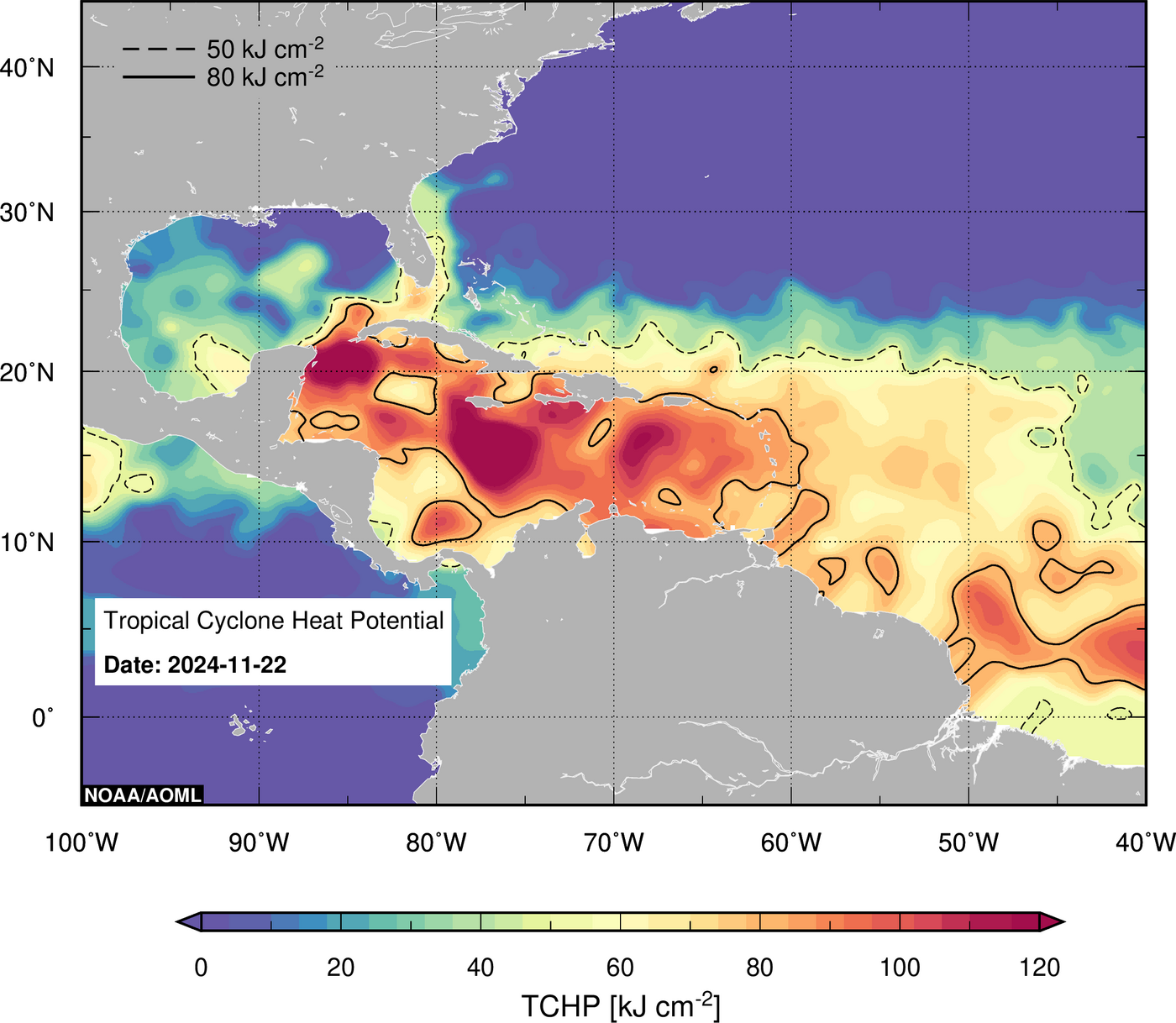
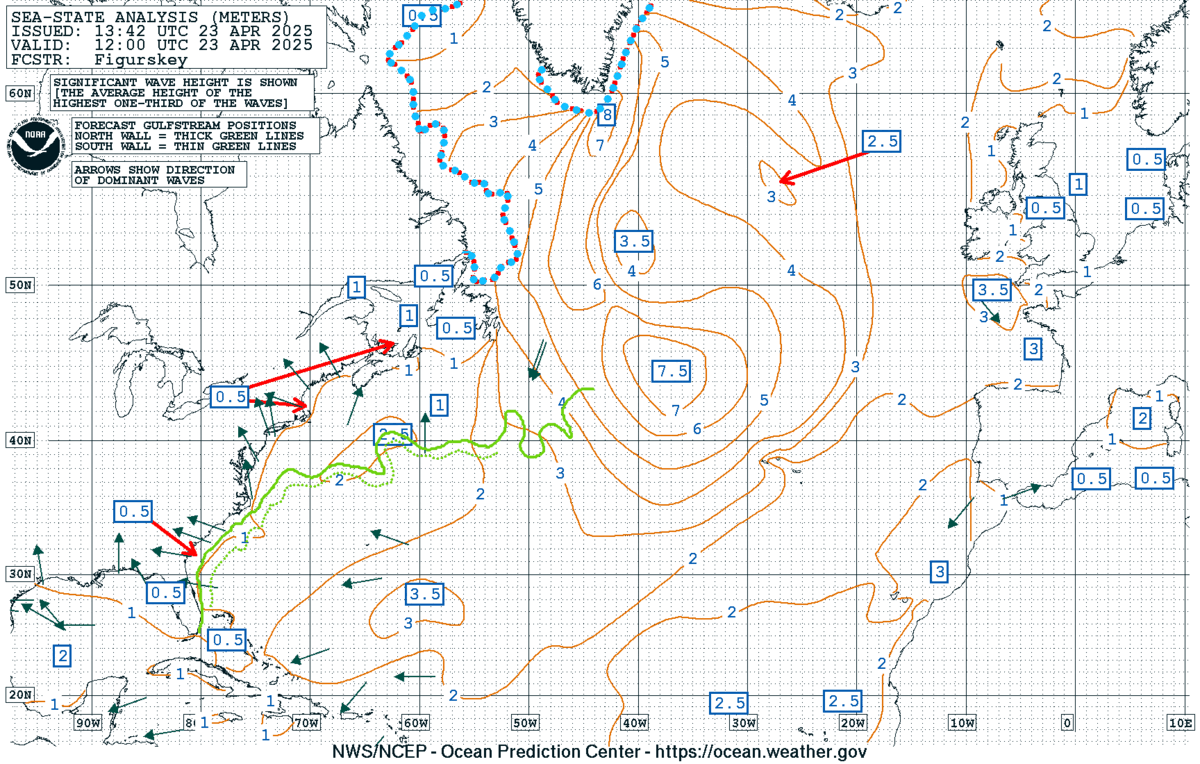
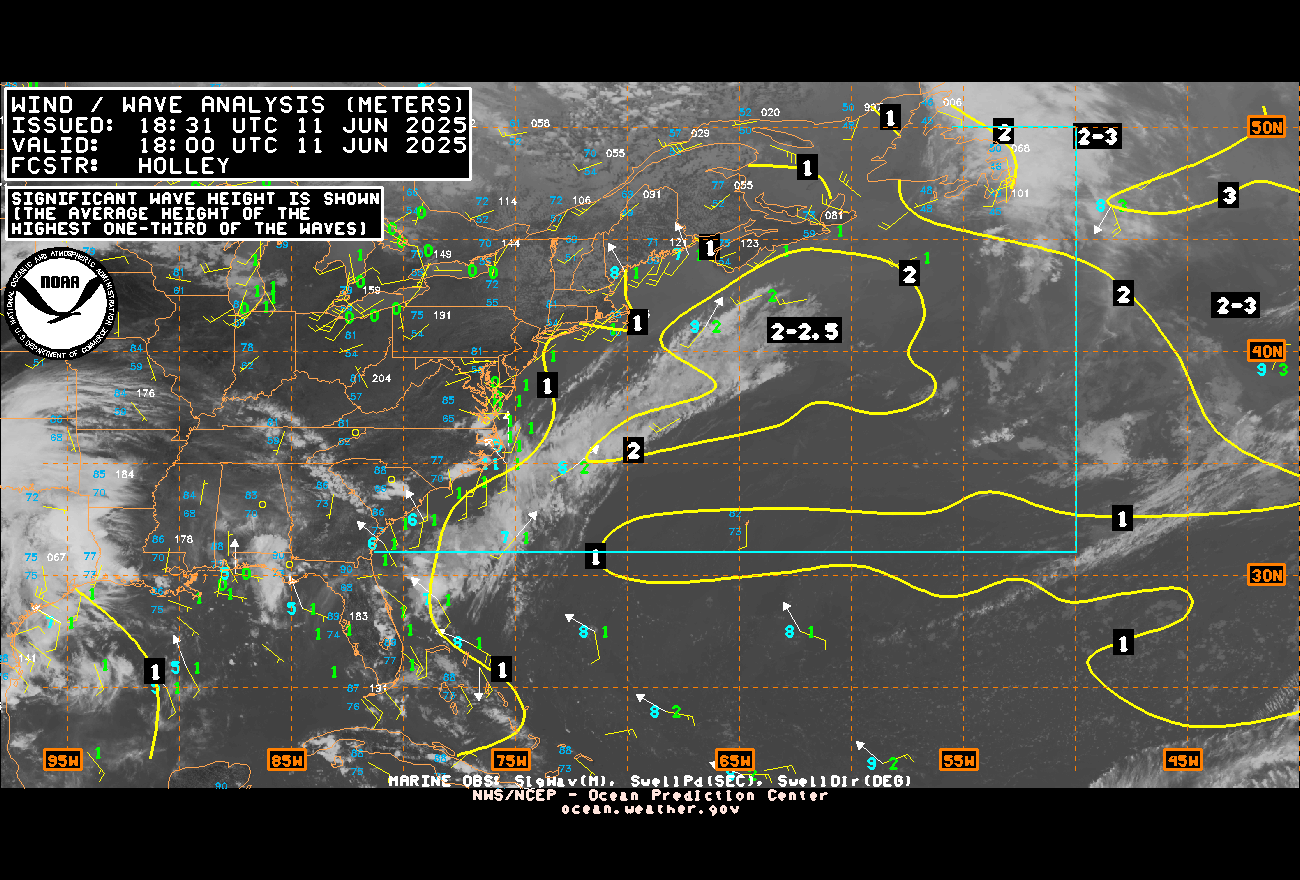



Water vapor loop (dark blue/yellow is dry mid & upper level air):


November tropical cyclone origins:
Averages below based on climatology for the Atlantic Basin for November:
Wind shear (red - strong shear; green - low shear):



Saharan dust spreads west each year from Africa driven by the prevailing winds (from east to west over the Atlantic). Dry air = yellow/orange/red/pink. Widespread dust is indicative of dry air that *can* interfere with the development of tropical cyclones. However, sometimes “wanna’ be” waves will just wait until they get to the other side of - or away from - the dust plume then try to develop if other conditions are favorable (we’ve already seen this with Beryl & Debby this year). In my personal opinion, there is way too much “hoopla” about the presence of Saharan dust & how it relates to tropical cyclones. In any case, the peak of Saharan dust typically is in June & July.
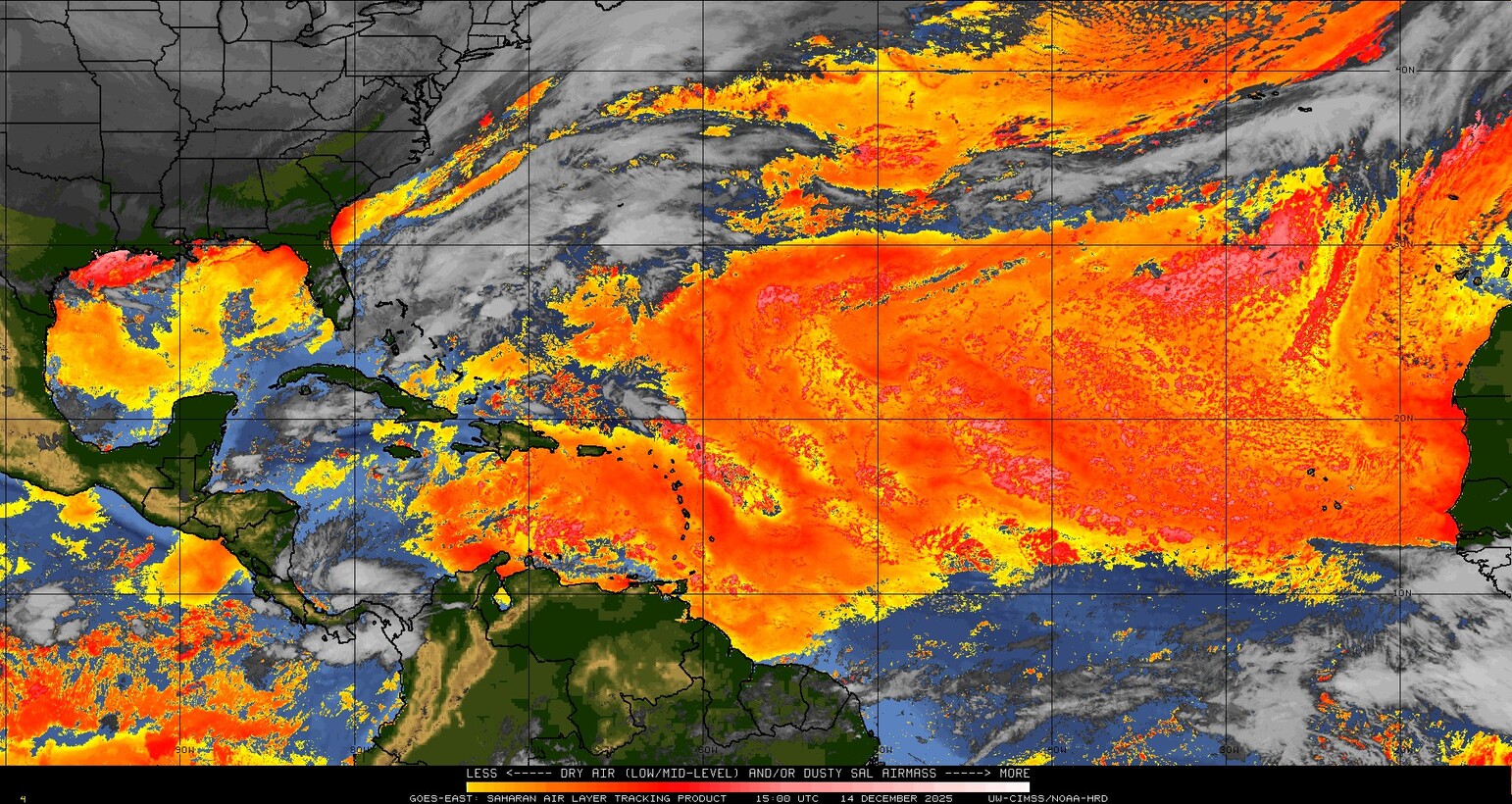
2024 names..... “Rafael” is the next name on the Atlantic list (names are picked at random by the World Meteorological Organization... repeat every 6 years). Historic storms are retired [Florence & Michael in ’18 (the last time this year’s list was used)... Dorian in ’19 & Laura, Eta & Iota in ‘20, Ida in ‘21 & Fiona & Ian in ‘22]). In fact, this year’s list of names is rather infamous because of the ‘04 season when Charley, Frances, Jeanne & Ivan - all retired names - hit Florida within a matter of about 6 weeks. The WMO decided - beginning in 2021 - that the Greek alphabet will be no longer used & instead there will be a supplemental list of names if the first list is exhausted (has only happened three times - 2005, 2020 & 2021). The naming of tropical cyclones began on a consistent basis in 1953. More on the history of naming tropical cyclones * here *.

Hurricane season climatology:




East Atlantic:





Mid & upper level wind shear (enemy of tropical cyclones) analysis (CIMMS). The red lines indicate strong shear:
Water vapor imagery (dark blue indicates dry air):

Deep oceanic heat content over the Gulf, Caribbean & deep tropical Atlantic. The colors will brighten greatly as the water warms to greater depths deeper into the season:

Sea surface temp. anomalies:
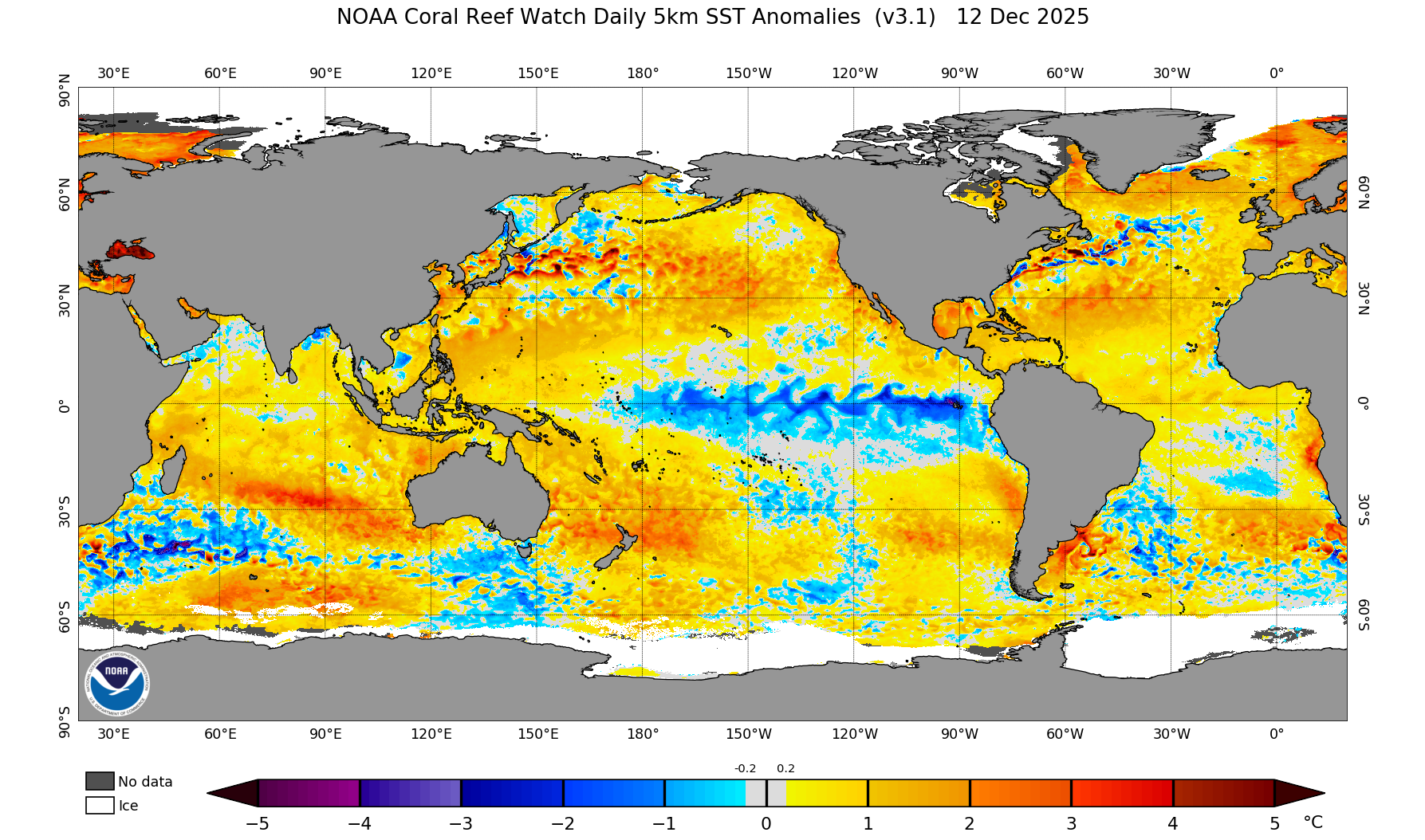

SE U.S. surface map:

Surface analysis centered on the tropical Atlantic:
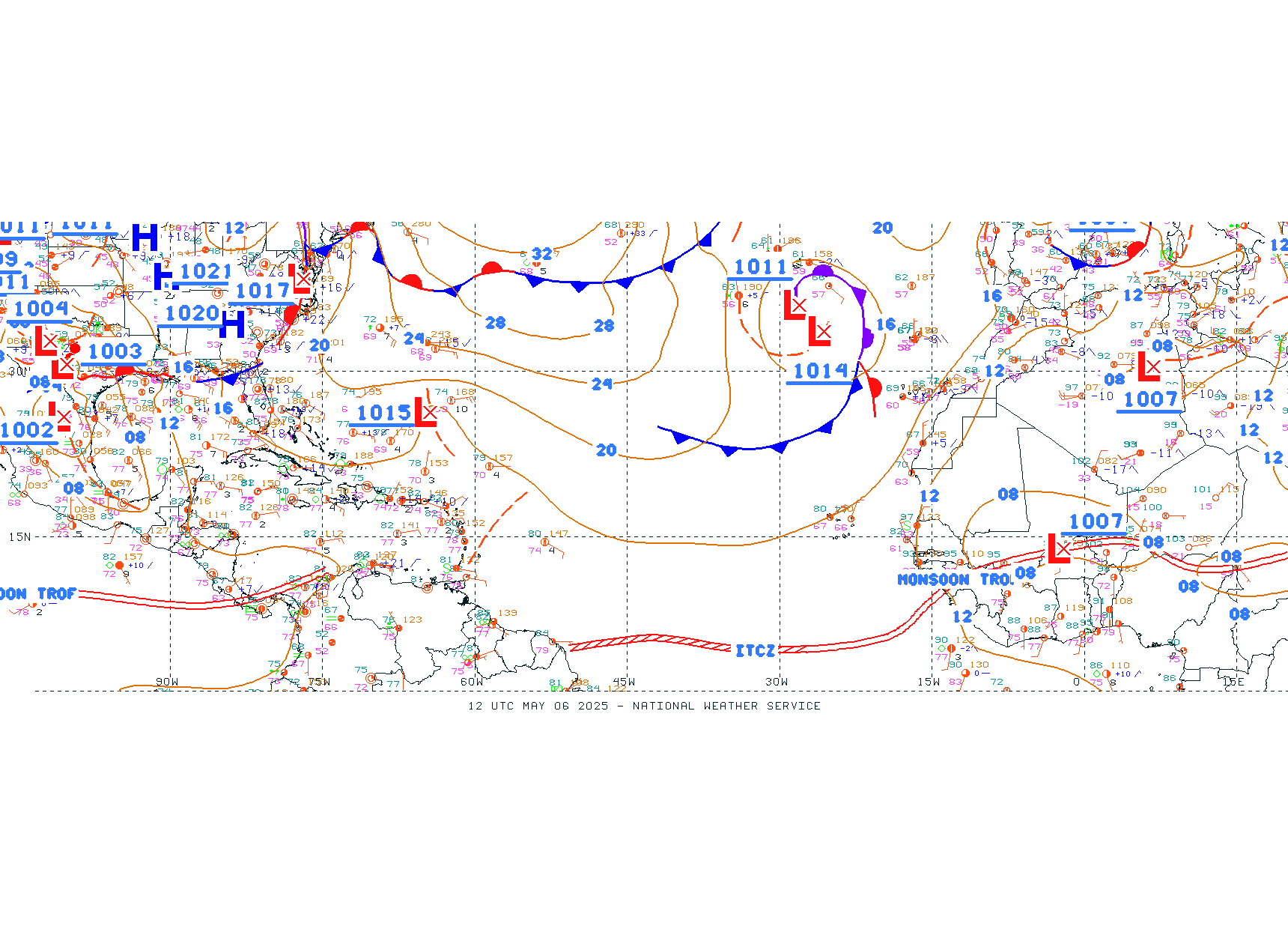
Surface analysis of the Gulf:
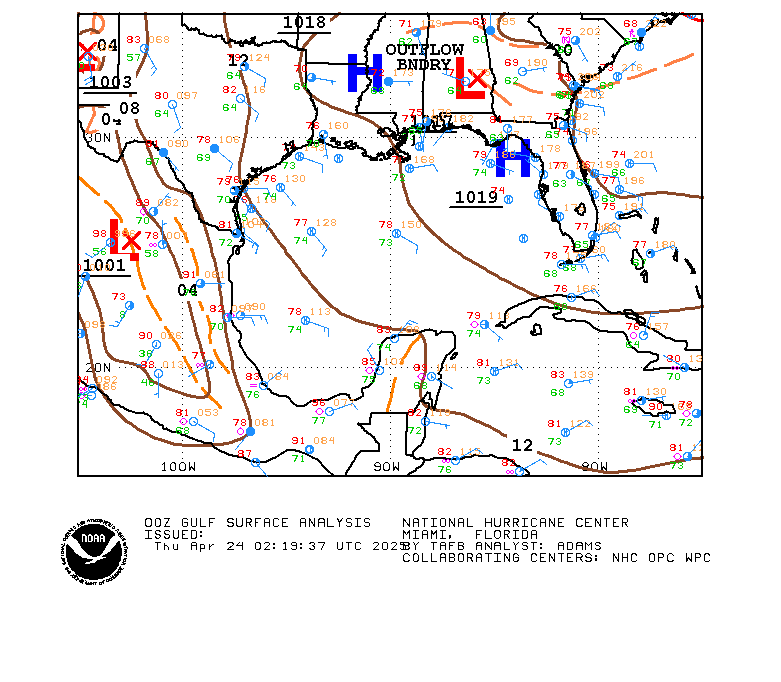
Caribbean:
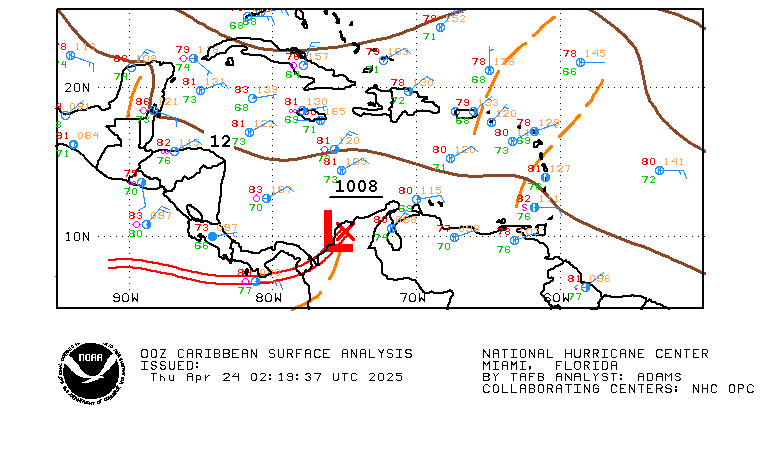
Atlantic Basin wave period forecast for 24, 48, 72 & 96 hours respectively:
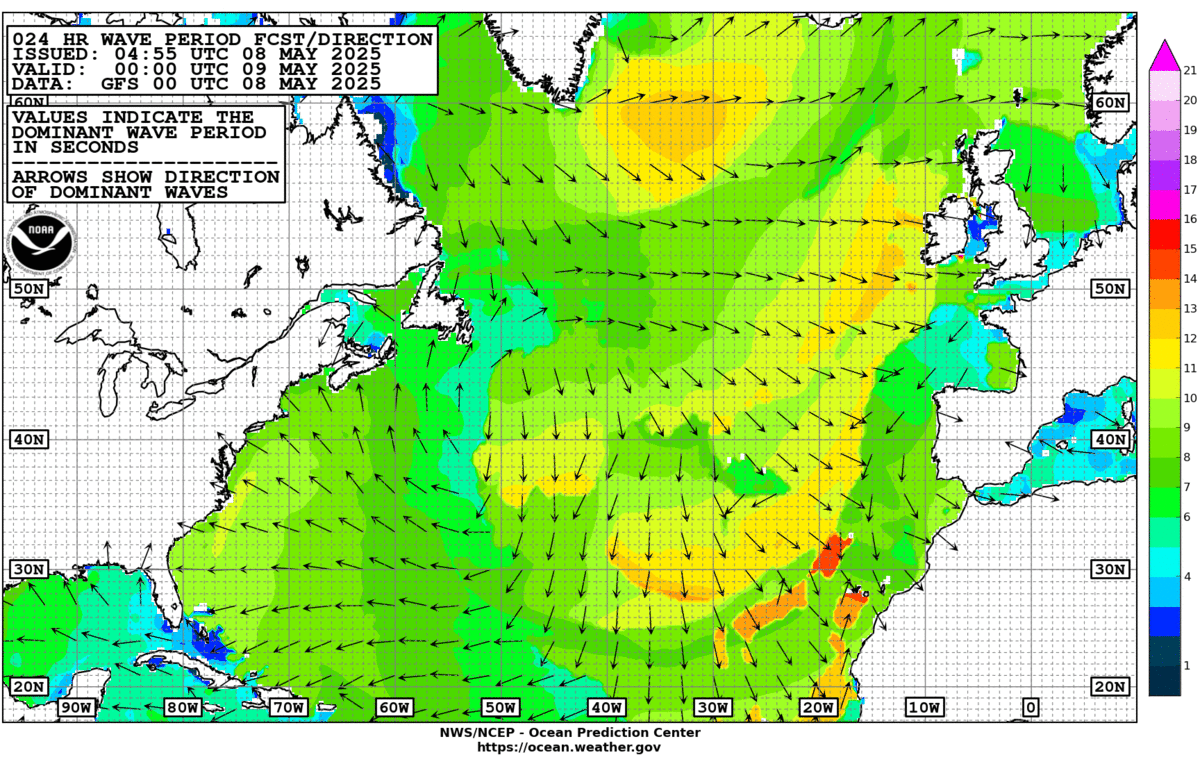
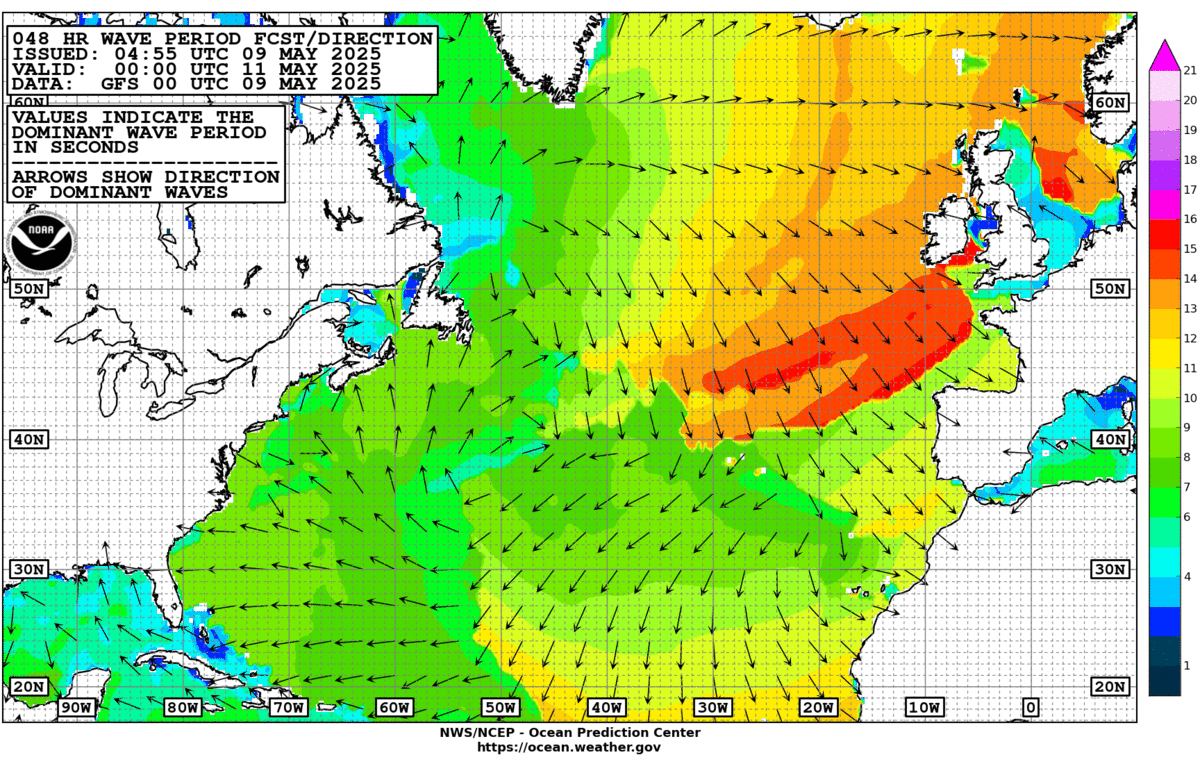
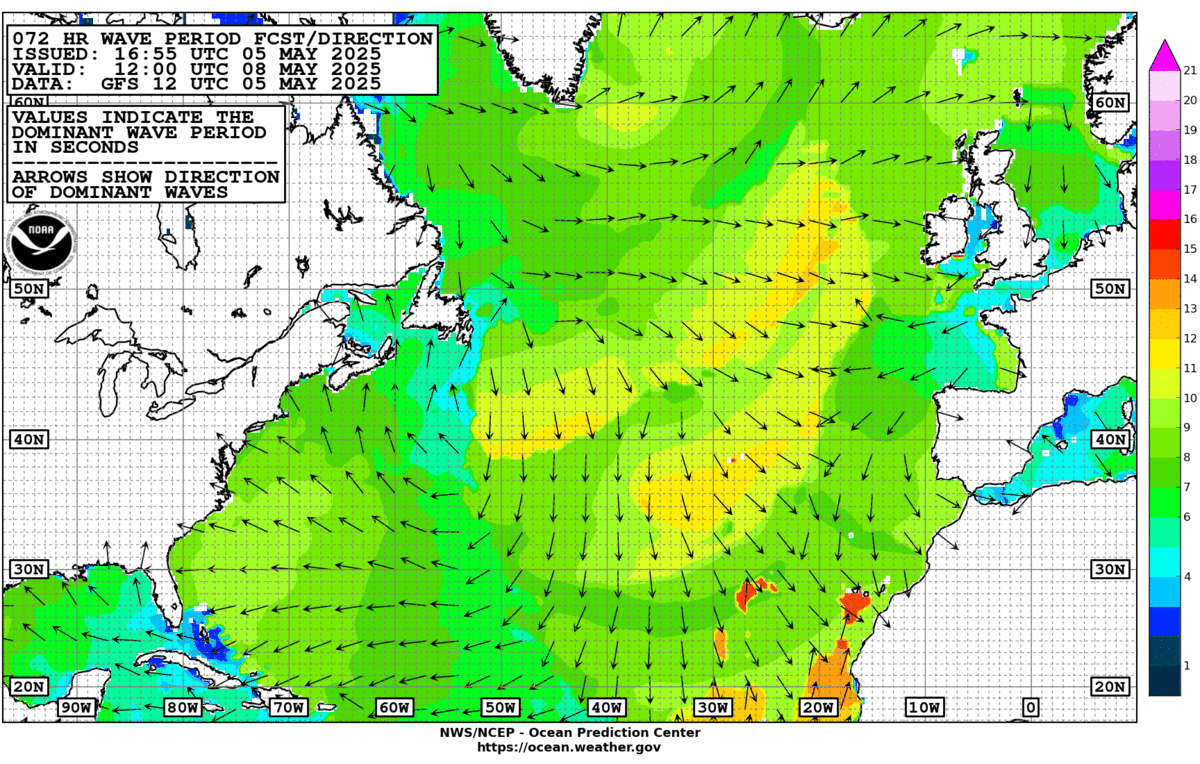
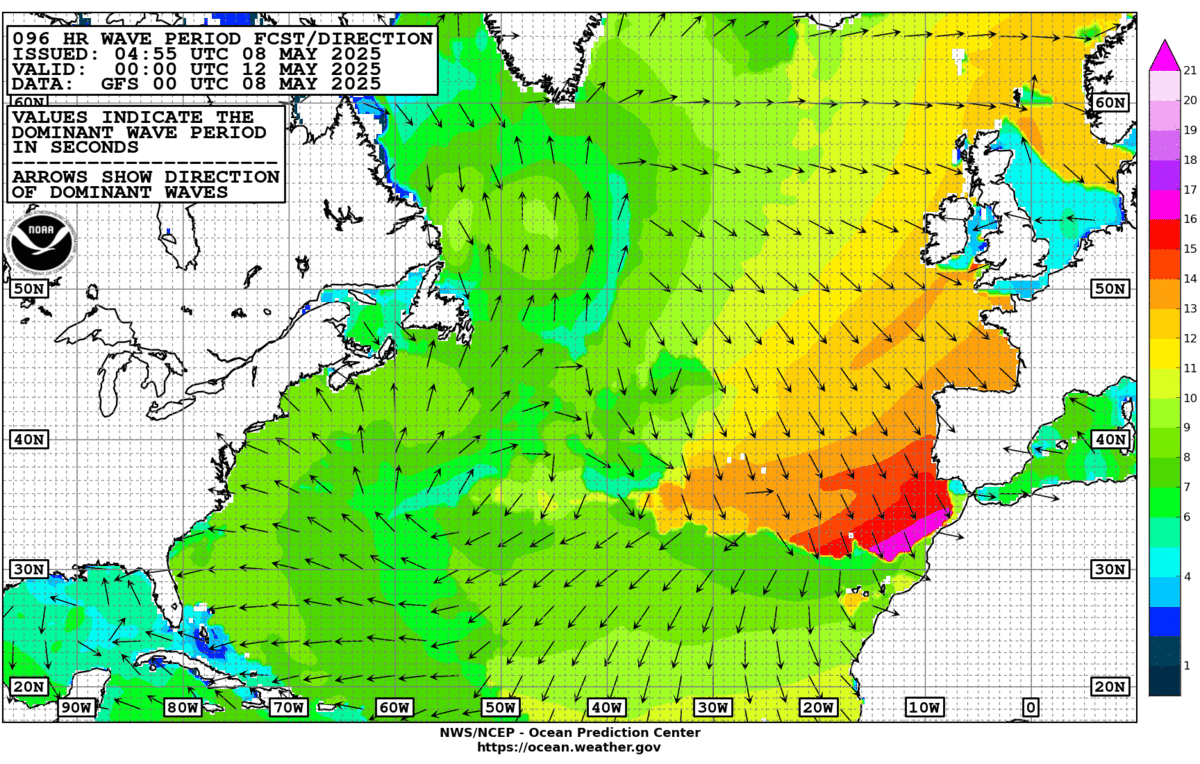

East & Central Pacific:



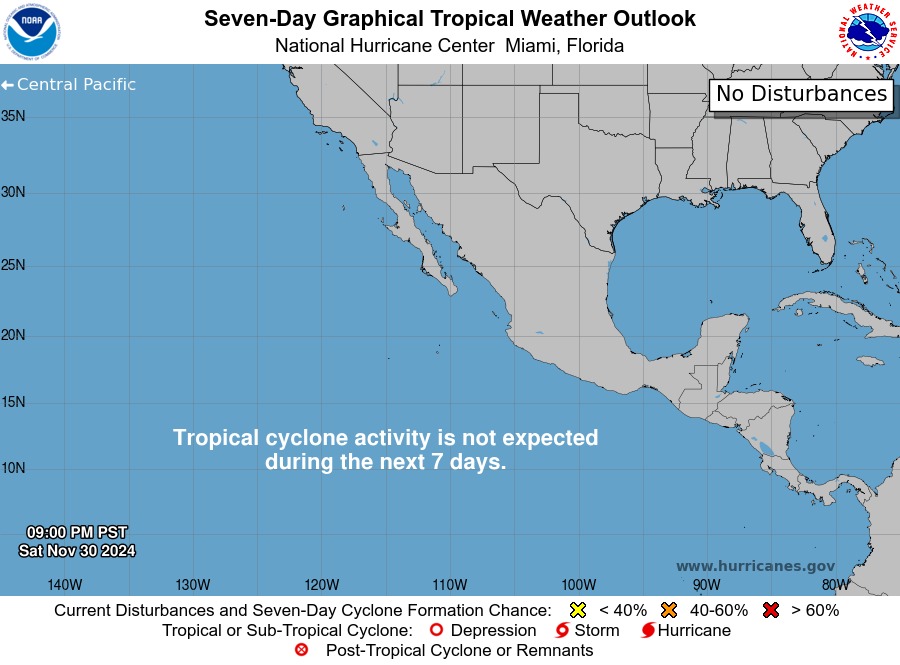
Central Pacific:
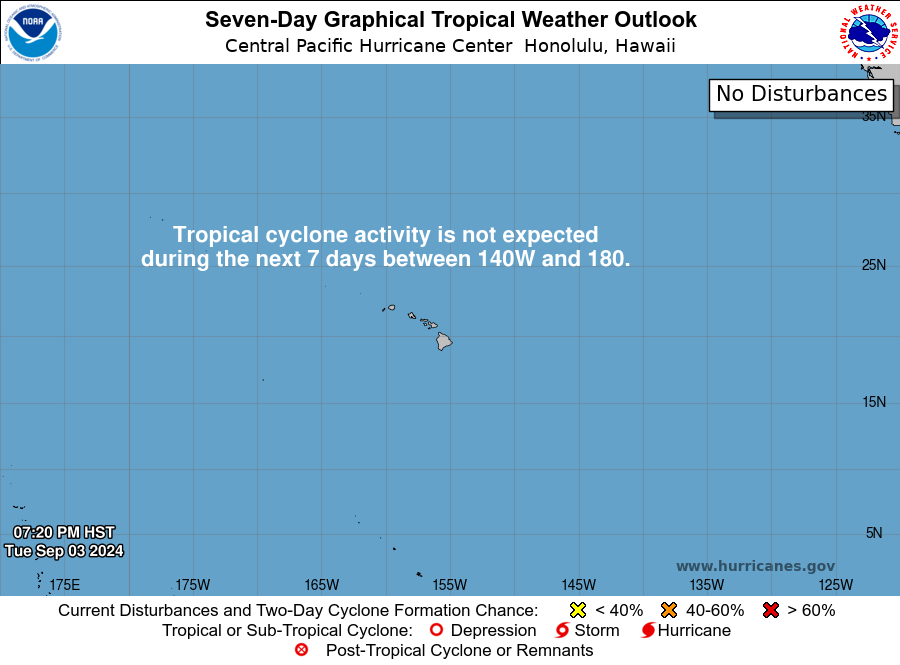
Hawaii satellite imagery:

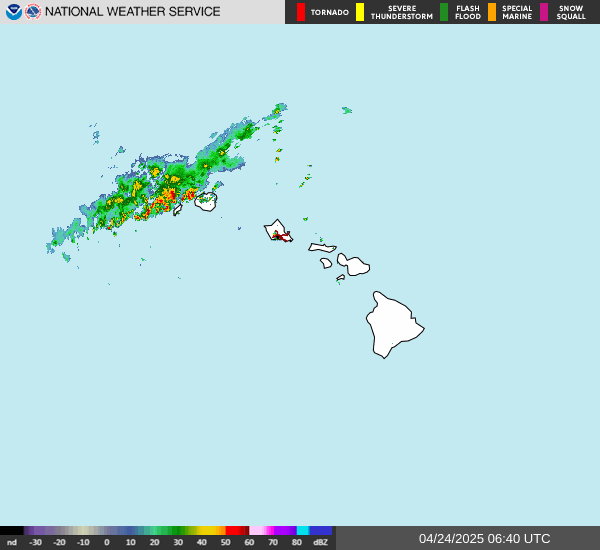
West Pacific:
“Yinxing”:


Global tropical activity:

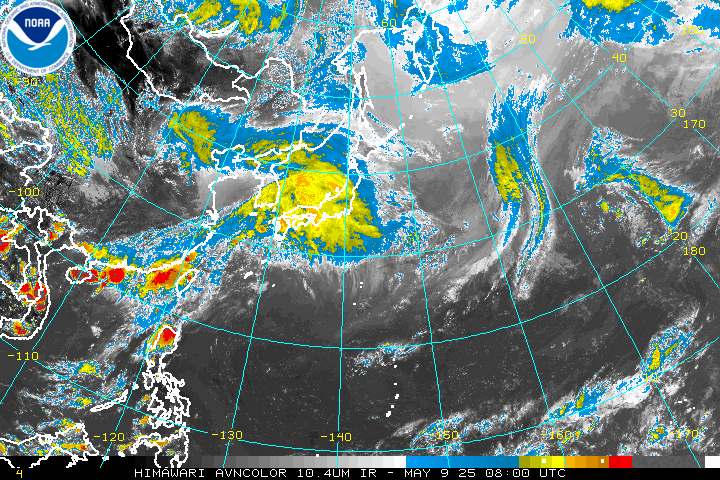
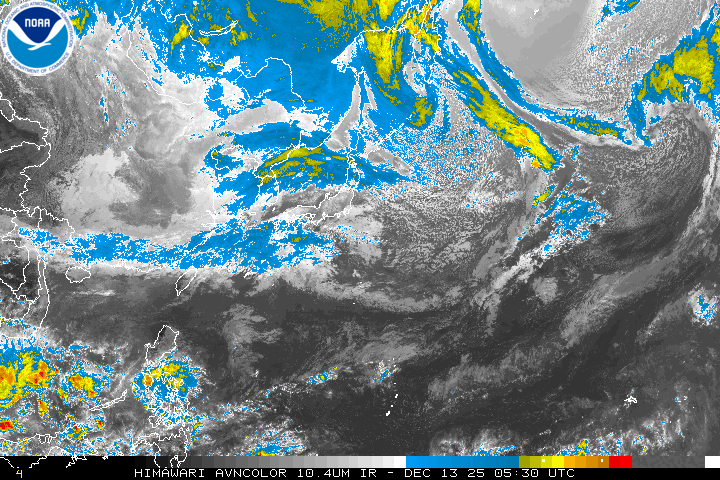
Cox Media Group












